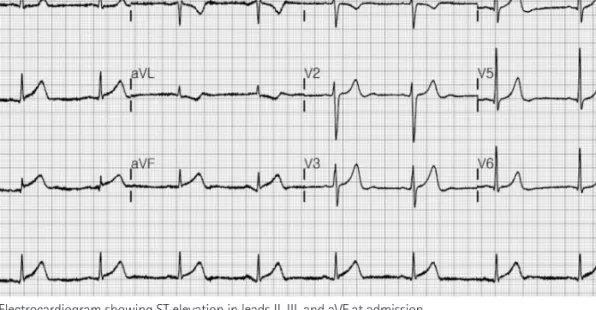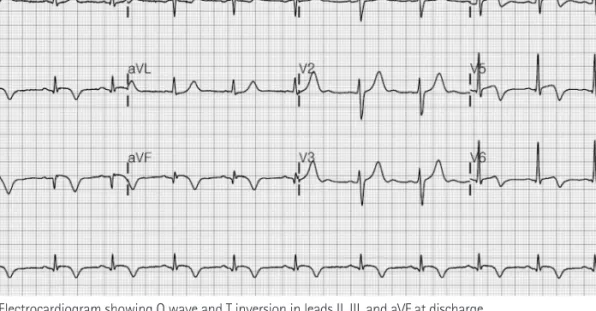133 Copyright © 2012 The Korean Society of Cardiology
Korean Circulation Journal
Introduction
Carbon monoxide (CO) is known as a silent killer, because it is an odorless, colorless, and non-irritating gas. Myocardial infarction related to CO poisoning has been frequently reported in the litera- ture; however, an ST elevation myocardial infarction (STEMI) due to coronary occlusion is a very rare presentation.
1)Although an increased tendency for thrombogenesis during CO poisoning has been reported,
2)the precise mechanism and treat- ment of STEMI related to CO poisoning remain uncertain. Here, we report a rare case of acute STEMI complicated by increased throm- bogenicity secondary to acute CO poisoning and complete revas- cularization after anti-thrombotic treatment.
Case Report
http://dx.doi.org/10.4070/kcj.2012.42.2.133 Print ISSN 1738-5520 • On-line ISSN 1738-5555
A Case of Acute Carbon Monoxide Poisoning Resulting in an ST Elevation Myocardial Infarction
Soohyun Kim, MD 1 , Joo Han Lim, MD 2 , Youngjoong Kim, MD 1 , Sewon Oh, MD 1 , and Woong Gil Choi, MD 1
1
Division of Cardiology, Internal Medicine, Konkuk University Chungju Hospital, Chungju,
2

